
|   |

|   |
|
February 2022 This is your country, This is your world This is your body And you must find some way To live within the ALL of it. - TA-NEHISI COATES, American writer 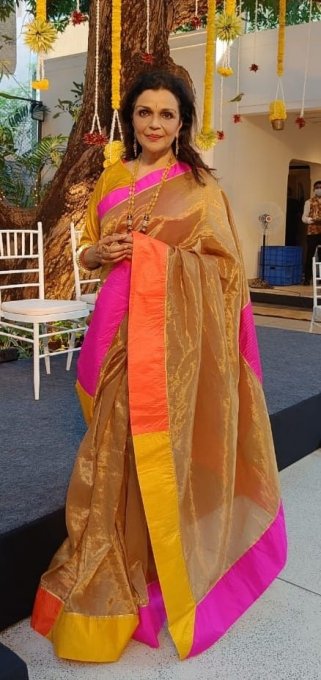 As we enter February and the bright cheer of Basant Panchami (the arrival of Spring as per the Indian calendar of 6 seasons), we are confronting a very sobering thought. The necessity of NAVIGATING FAILURE. The disappearing promise of a Covid free 2022 and the shifting dates for dancers to return to rehearsal studios and house full auditoriums. As I write this, I am very aware that the UK has thrown aside all norms of Covid protocols and opened its borders and that many theatres in North America are planning their Fall season in earnest. Flights to India are full with so many arriving to visit their families after a 2 year gap. Performances are still occurring here and there in many Indian cities but the online Mela continues. It is now a BIG BLUR. Thematic festivals are jostling with one another for eyeballs, much like the offline Chennai season. Some are faring well and others not so, with demand slowly but surely decreasing and the big F word settling in - FATIGUE. #PADMA HONOURS 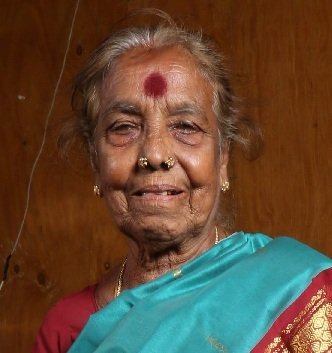 Muthukannammal A long overdue honour of PADMA SHRI for the 83 year old Sadir artiste Viralimalai R Muthukannammal came as a joyous surprise. In the limelight over the past few years as the protagonist of an academic volume and the subject of many animated webinars and digital discussions, this hereditary dancer stands a symbol of a remarkable community of artistes who have been the custodians of dance and temple traditions for centuries. Even the late guru K J Sarasa did not achieve this honour and regretted it to her dying day. MUTHUKANNAMMAL may not be a household name to the Bharatanatyam dance world. Several gurus were buzzing with curiosity asking, "Who is she?" This modest artiste is a 7th generation descendant of hereditary performers and she calls her form SADIRATTAM. Daughter of Ramachandran Nattuvanar of Viralimalai, Muthukannammal was a dedicated Devadasi to the Murugan temple in Viralimalai, Tamilnadu. When the news flashed onto the screen, I let out a Cristiano Ronaldo cheer "SIIIIIIII" The Portuguese football icon's goal winning cry is always the Spanish "SI" for YES! Hereditary dancer Yashoda Thakore shared her delight, "This recognition is a result of Amma's unrelenting perseverance and grit to keep the art alive. It gives me confidence to see that the much required change in attitude has begun and am grateful to every force that continues to bring about this change." A student of Muthukannammal for 12 years, dancer Swarnamalya Ganesh adds, "This is a historic moment as the Indian state recognises not only Smt. Muthukannammal as a Sadir dancer but Sadir as an art form that is the precursor to modern Bharatanatyam and hence reinstated in its practising form." Smiles turned to a gasp. Padmaja Reddy? Whaaat? That name again? The question has been asked ever since she got selected for the prestigious Sangeet Natak Akademi for Kuchipudi a few years ago. There was an uproar as to how prominent artistes on the Executive Committee could allow the name to be passed. Renowned dance critic Leela Venkataraman, with her normal composure and equanimity wrote of Padmaja's substandard performance for the awards event. And now, she is selected for another national honour - a PADMA SHRI! While social media is already ablaze with several pointed posts about Padmaja Reddy's glaring inadequacy as an artiste and the blunder of the Padma Awards committee, the worrying scenario is - how much further will she go in the national arts scene? With two national awards under her belt, what next? The larger questions are….. Is it only a Kuchipudi problem? Should only Telangana artistes protest or is it a national disgrace? Should the entire DANCE community be concerned? How complicit are the committee members in the selection process? Why is the government sometimes so blind to merit and standards? So instead of PADMA-SHRIEKING and wailing at the PADMA DUSHAN (pollution) and PADMA PRADUSHAN (maha pollution) this should be a clarion call for the seniors in the dance community to come together on this and other issues. I have been writing again and again on several vital issues. Here I point out - AGAIN! The Sangeet Natak Akademi has been headless for 2 years. No committee, no chairman. Everything has ground to a halt. Why? Other departments like Oil, Industry, Shipping, Technology, Farming have never been without a chairperson. Why only in Culture? The matter has been brought up in Parliament by Rajya Sabha MP, Sonal Mansingh. No action taken. The award monies for the awardees have not been disbursed to selected artistes, especially during the critical COVID times. Why is the Ministry of Culture silent? Are they happy for this organisation to remain comatose? Do the ministers even care? Why are the arts in India treated so shabbily? # ARTS AND THE ANNUAL BUDGET It is budget time for the Government of India and I am sure that, like in 2020 or 2021, the Arts will not occupy even a tiny corner of the Finance Minister's mind. The Department of Culture falls under the umbrella of the Ministry of Human Resources and Development and it has been prey to the lopsided views of bureaucrats who mostly hoard the monies until the final 2 months of the financial year and then spend it hastily and indiscriminately before March 31st. Badly planned festivals, events held in cold climates making it uncomfortable for dancers in bare feet... I can continue to hold forth on the malaise of monies wrongly disbursed. Indian companies are doing well. Pharma companies have made a killing during Covid. CSR (Corporate Social Responsibility) which is mandated for all private corporations MUST be forced to look at the arts. If tech giant INFOSYS can occupy such a major branding at the recently concluded Australian Tennis Open and TCS - Tata Consultancy Services - appear as headline sponsor for the New York City Marathon, then how different are dancers from athletes? DANCERS ARE THE ATHLETES OF THE SPIRIT said Martha Graham. Tennis fans will agree that watching slow motion replays of Roger Federer execute a perfect serve or Rafa Nadal pummel a fierce cross court forehand is pure artistry! Sports arouse testosterone. Arts coax out estrogen. Both are "feel good" activities that build character and fortitude. In sports there are winners and losers. It is only in the Arts that we all win. So why are the Arts not considered on par with sports? Do they not also bring glory to the country? Are the Arts not the perfect example of SOFT POWER? Why can't the live arts also be beneficiaries of large grants? What stops the boardroom from giving to the Arts field? In my own conversations with many corporates, their first remark is "Find me a worthy charity - preferably physically or mentally challenged, orphanages, geriatric care or street children. Arts, heritage and history are not crucial right now." Dance/Arts advocacy is the need of the hour. We must all be able to draft a simple 10 point presentation about how the arts will actually benefit and add value to every corporation. It is a win-win situation. #CLASSICAL-CONTEMPORARY  Mavin Khoo When London based Bharatanatyam dancer MAVIN KHOO announced his weekend talk fest about his life lessons with a large dollop of advice to young dancers about building a professional career, the registration link became expectedly busy. Mavin began by acknowledging his position of extreme privilege. A steady job as rehearsal director with regular pay check from one of the world's most acclaimed dance companies is an enviable position to speak from. Mavin has gathered a generation of fans with his close connection to Bharatanatyam and his jaw dropping athletic presence on stage. His talk was compelling in parts and left large loopholes for questions in some other areas. He expressed a steadfast loyalty to the Margam style of item based performances as against the thematic work that is popular with so many dancers today. He spoke about conviction and that dancers should be wary of western presenters who pose as "dramaturgs" trying to manipulate the dancer's training. My contention with that kind of statement is that classical dancers NEED a dramaturg more than ever - western or eastern. I watched Renjith and Vijna in their compelling duet at the KORZO THEATRE in THE HAGUE where Leo Spreksel was the dramaturg. The performance was beautiful and only amplified the duo's talent without taking anything away from their technique or style. It also gave Renjith and Vijna the possibility of re-imagining their dance art in ways that may not have been possible if they had remained in the "Chennai state of mind". An important point Mavin stressed was that dancers must arrive at a pragmatic acceptance of which world they should explore. Diaspora, dance teacher, freelance performer, MainStage artiste, choreographer, ensemble dancer- there are many worlds. One can't be everywhere, he stressed, and it is possible for dancers to make a fulfilling career by knowing one's ability and circumstance. Mavin "Anna" is a hero and a role model for so many dancers today and this kind of interaction was both inspiring and useful to his dedicated fan base. #HOMAGE TO A GURU 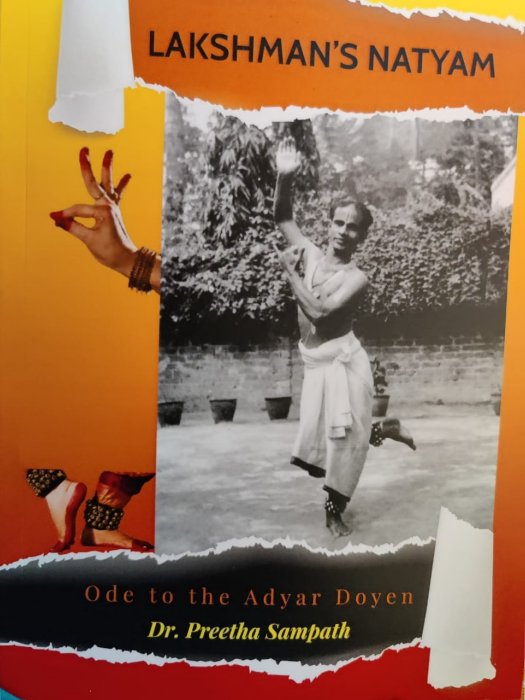 A guru to many (including Mavin Khoo and yours truly), and possibly the first global Bharatanatyam guru of post independent India, my dance teacher was the subject of an endearing and affectionate book titled LAKSHMAN'S NATYAM. Lovingly compiled by a student Preetha Sampath, this book is more a dramatised narrative containing glimpses of his life, family and art rather than a serious biography. It shares lesser known facts about Lakshman Sir's love of cricket, his unique sense of humour and his multiple talents in mridangam, nattuvangam and music. The book relates Lakshman Sir's early years, education, his entry into Kalakshetra, his devotion and dedication to Athai (Rukmini Devi), his innate sense of rhythm and geometry that were the visual markers for his style. A very readable publication, this book is a loving homage to my guru who stamped his individual style of choreography and "talam" patterns onto Bharatanatyam. That he conducted performances for Yamini Krishnamurthy and even Tamilnadu's Chief Minister J Jayalalithaa may not be known to younger dancers. A gorgeous Kamadev would rehearse with Sir early in the morning before going across to Chandralekha's home. Glancing through the book brought back a flood of memories. Long before Sir started his own institution BHARATA CHOODAMANI in 1969, he would come home 5 days a week for classes after school. Sometimes class would be at 5am in the morning if there was a performance looming - even if I had an exam on that very same day. My perfectionist mother would insist that we should be "thorough" with the choreography! My sister Pritha - who always stood first in her class - would cry and protest that it took time away from her studies! A stickler for punctuality, I remember Sir waiting for me when I returned home from school. I would be late after playing a volleyball or netball match and my uniform would be muddy and sweat stained. Sir would wait patiently while I washed and changed into a salwar-kameez (the practice dance sari was not yet popular in the mid 1960s). Rehearsals would start at 5pm and continue at home until 8pm. My father would then interrupt saying, "Porum, porum. Kuzhandai saapidanom" (Enough, enough! The child must eat). As his very first student when he left Vyjayantimala's NATYALAYA in 1965, I have clear recollections of many chapters in this publication. The premiere of the Chola era dance drama VARUNAPURI KURAVANJI and the building of the now iconic choreography in the Ragamalika varnam NITYA KALYANI. I was among the few students who remember being taught by Lakshman Sir actually DANCING. His "araimandi" was copybook perfect and his "nritta" was so compact and intelligent that one never realised how the "adavus" flowed so seamlessly. Lesser known facts about Lakshman Sir are contained in this charming volume. His foray into popular cinema as a choreographer when he was given the title DANCE DIRECTOR. Three of his choreographies in films like HAMSA GEETHE (Kannada), SUBBA SHASTRY (Kannada) and ANANDA TANDAVAM (Tamil, featuring a young Jayalakshmi Eswar as a Tanjavur court dancer) were huge hits for the dance sequences alone. #METAMORPHOSE 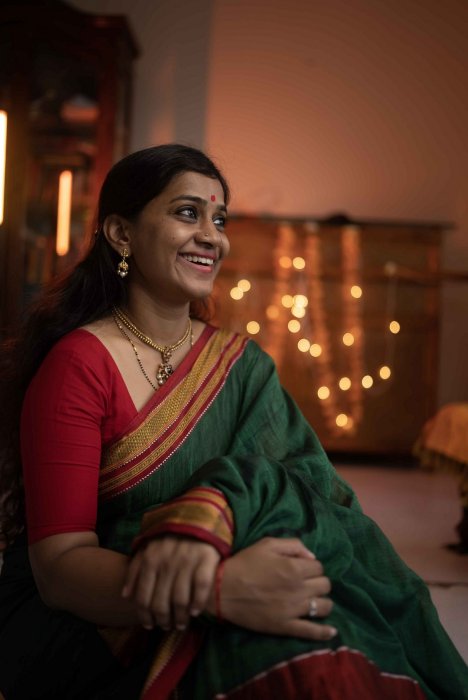 Keerthana Ravi With an MBA under her belt and loads of zest and talent in her pores, Keerthana Ravi has built a consistent track record of curating festivals. The 7th year of her EVAM event was again presented virtually, like last year, but with a carefully thought out template. Pre-performance and post performance discussions and interesting dance features made this 3 day event an intriguing viewing experience. 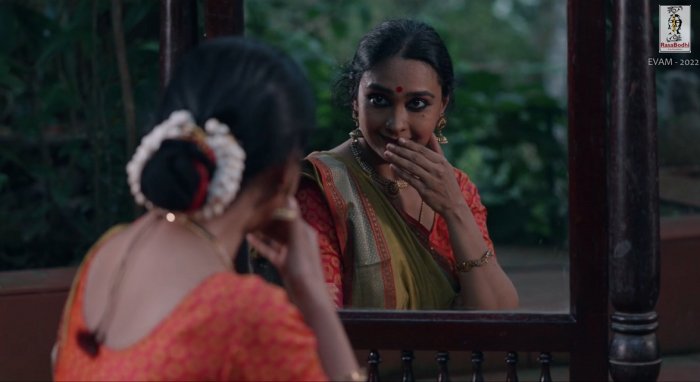 Rajashree Warrier I enjoyed watching Rajashree Warrier in her seated Padam. Reflected in a large mirror, the camera angle and her body position complemented her "abhinaya" as she elaborated the lovely Tamizh Padam composed by Guru Dandayudapani Pillai - "Yaaradi endan vasalil vandhu" in ragam Shanmugapriya. The mirror was used not as a mere prop but also as a character so that the Nayika could be talking to the Sakhi but also suggest society itself looking and judging her character. Subject and object played against and with one another. The mirror both revealed and camouflaged effectively, creating a visual mood board which kept me glued to the small mobile phone. 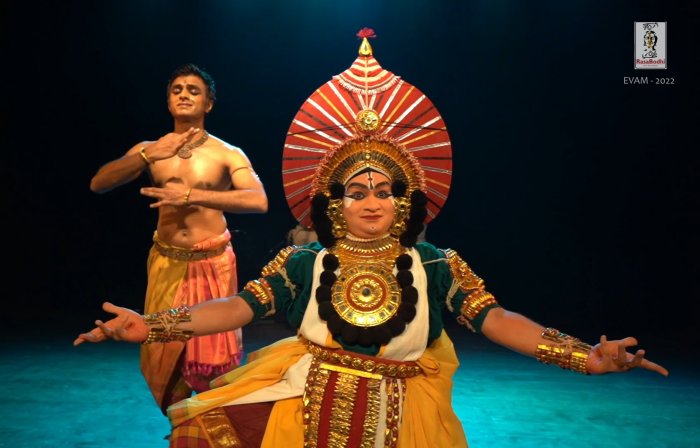 Parshwanath Upadhye & Sridhara Hegde Among the highlights of the festival was the collaboration of Parshwanath Upadhye and Keremane Sridhara Hegde. The coming together of Bharatanatyam and Yakshagana held mouth watering promise. Parshwanath intelligently allowed the Yakshagana format to dominate the performance palette, thereby giving the vibrant Karnataka folk form the highlight it deserves. Taking a scene from the traditional the performers began and ended with a homage to Ganesha. Parshwanath played Rati and Sridhar portrayed the role of Manmada. The celestial couple travel to the Himalayas and marvel at the splendour of the mountains. Both orchestras were able to keep the expected collision of sound and pace fairly well aligned. The sheer costuming and presence of the Yakshagana artiste was electric on the small screen. Parshwanath has an androgynous presence and intelligently kept his characterisation muted without his normal bravado. The fact that Keerthana has ideated and produced the event which yielded a profit is good news for the dance world. Several tickets were sold and the artistes were well compensated which augurs well for a new generation of dancers who have turned producers and presenters during the pandemic. Being flexible and open to change and newer inspirations is the way forward for many performers who may have other unseen talents to hone. I am delighted whenever I see dancers venture into worlds that they never expected to pre-pandemic. They are now designers, bakers, animal and eco activists, chefs, saree retailers, graphic designers, content writers, lighting designers, producers and event managers. The list is growing as it should. AND, they are making more money and supporting their dreams at a faster pace than just sticking to being on stage! #ENDLESS BRILLIANCE 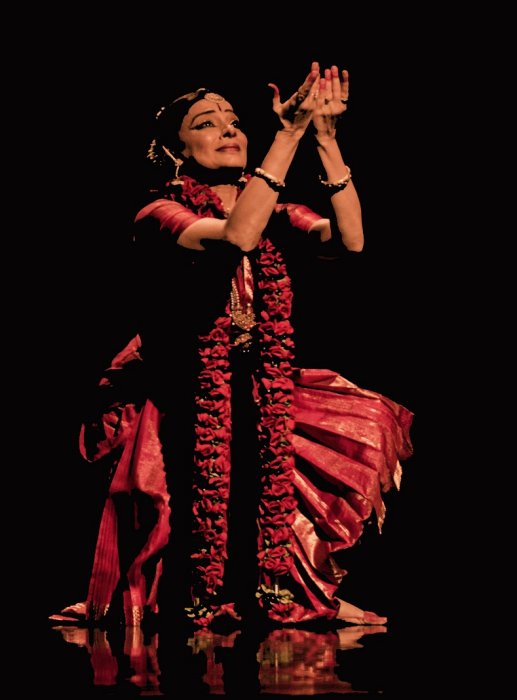 Malavika Sarukkai I have to comment here about the Music Academy digital performance of Malavika Sarukkai. Ignoring the requests for a traditional varnam and continuing her relentless path of Bharatanatyam explorations, this award winning dancer created a gorgeous palimpsest of images and possibilities. I watched Malavika in person in December and again on my IPad in January. Hers is a body and a style that suits both mediums. Supple and curious, the GANGA centre piece was lush and brimming with possibilities. "My only conversation over the past 2 years has been a daily one with my dance". She shared this comment over a cup of coffee recently and it was an eye opening statement from someone who could very easily have become jaded or lazy with her storied career. In the performance, Malavika delivered each piece with a depth of integrity and action. Never once did she take short cuts or try to camouflage her mounting years. Agile and fit as she stands on the cusp of marking 50 years on stage, Malavika is a true torchbearer for classical dance. She reminded me of a mature Rafael Nadal (another favourite of mine!) who has always believed that "when the going gets tough, you don't rise to the occasion but sink to the level of your training." The transition from the liquid and mercurial Gangavatara to the adolescent moods of ANDAL of the NAACHIYAR TIRUMOZHI was seamless. The young and petulant Andal who pleads with Krishna not to destroy her sandcastles segues to a mature voice calling out to her Lord as the lion-headed Narasimha - the choreography captured the delicate nuances of a tender, bruised love. For younger dancers, enraptured with Malavika's performance and the impeccable musical arrangement, it is heartening to see this diva extend her influence across generations. Strangely, not a single Chennai based dancer trains with her! I did not watch any of the other evening or morning performances, but the general comments were very favourable for Meera Sreenarayanan and Parshwanath Upadhye. Alarmel Valli and Rama Vaidyanathan received their share of rapturous adulation from their legion of fans; Narthaki Nataraj was also commended for recalling the flavour of the more measured past amidst so many varying styles of Bharatanatyam on the programming roster. The Music Academy is thrilled with the success of their second digital dance festival and while tickets were bought largely by those living outside India, it goes to show that the appetite to watch the emerging stars and the established seniors is not waning. # MUSIC FOR EDUCATION 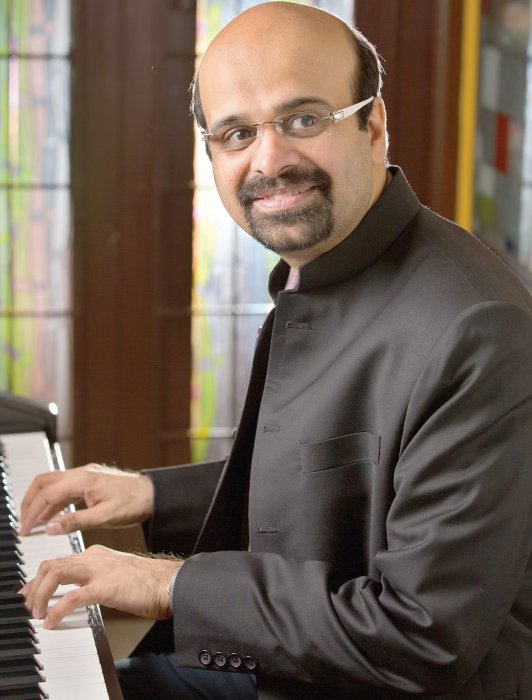 Anil Srinivasan I let out a loud whoop of joy with the news that my neighbour and music wizard Anil Srinivasan's RHAPSODY EDUCATION had been selected as Asia's best and the WORLD'S BEST ARTS IN EDUCATION. Chosen by the prestigious Wharton School's Alfred West Jr. Learning Lab, USA, RHAPSODY was chosen from among 1500 arts and humanities programmes. A huge honour and a very timely one for Anil and his remarkably dedicated team of teachers and volunteers. RHAPSODY EDUCATION that was started in 2013 has reached over 400,000 children in South India. It uses music to teach science and mathematical concepts - a perfect blend for Anil who has an MBA from the US and a flourishing career as a concert pianist in India. #R-E-S-P-E-C-T  Aretha Franklin I just concluded watching the biopic of legendary soul singer Aretha Franklin titled RESPECT. The story follows the expected lines of a dark childhood filled with an overbearing father, an abusive husband, early sexual assaults by his friends, a gradual descent into addiction and many dark moments of anguish. This African American genius became a mother at age 12. And then again at 14. She was a child having children! However dark the demons in her growing years, Aretha was unstoppable for her sheer genius and jaw dropping vocal range that played havoc with traditional gospel traditions. Aretha Franklin became an alcoholic who returned to the roots of the Baptist church in Los Angeles to record her best selling live album AMAZING GRACE in 1972. She was also an activist, whose voice was an integral part of Reverend Martin Luther King's civil rights movement. I contemplated the demons that haunt so many brilliant artistes like Aretha Franklin. Is it necessary to have trauma or some twist in one's character to be a "true genius"? History is replete with tales of greatness stained with repulsive and regrettable character flaws. 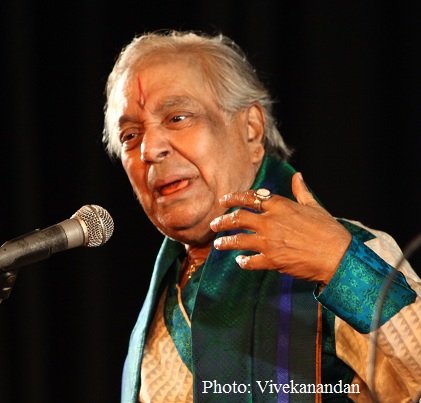 Birju Maharaj Compared to Aretha, Kathak legend Birju Maharaj came from Kathak royalty. An enviable lineage of several generations patronised by kings and noblemen, his demise at age 83 on January 17 became a cover story for Indian media. Maharaj-ji's astonishing "oeuvre" has spanned several decades, multiple genres and mediums and a range that defied simple definitions. As I write this, mainstream and social media is replete with daily homages of his contribution and dedication to Kathak and his unique touch that made this dance form accessible and popular. His humour, wit, sarcasm, musical and choreographic abilities, improvisational skills and stage charisma have been written about again and again. A darling of state patronage, Birju Maharaj and Yamini Krishnamurthi were the dance picks of every elected leader for international delegation and foreign tours in the 1960s and 70s. His performance at the PURUSH conclave/conference in December 2013 saw him in a different but equally sparkling avatar. Seated in a musical concert style setting, he played several percussion instruments and did gestural abhinaya with his remarkably mobile eyes and eyebrows. He brought down the house in the conference finale with a rousing standing ovation that spilled over to dinner and more anecdotes from his eventful life. Young male dancers were treated to a rare glimpse of his bonhomie and twinkling curiosity. Birju Maharaj-ji's life also contained many dark moments. I wonder if anyone in India can write or create a biopic or book about his brilliance alongside the demons and doubts without descending into hagiography? His legions of students are already filling pages and posts about his unique artistry, cementing his legacy among the immortal greats of India's dance galaxy. Till date we have yet to read an honest biography about any of our creative artistes. Warts and all. Nobody dares step into that shadowy territory. Our gurus are like Gods. Their halo blinds us. Only we forget that even the Gods made terrible mistakes. Bad choices, regrettable boons given to the wrong kind- throwing the world into temporary chaos. Yet, they are worshipped - warts and all. Today social media has toppled every pedestal and smashed all windows of ivory towers. Disturbing posts about Birju Maharaj are emerging steadily. Even Buckingham Palace is not immune to the latest sex scandal allegations thrown at Prince Andrew. Not everyone can be like Oprah Winfrey, talking about her childhood rape incident so openly for personal catharsis. Across class and caste, Indians are skilled at double speak. We are morally flexible with our heroes. Genius gets excused for its vanity and arrogance. We pick our Gods. Human or divine. #VISUAL DESIGN FOR A NATIONAL PARADE 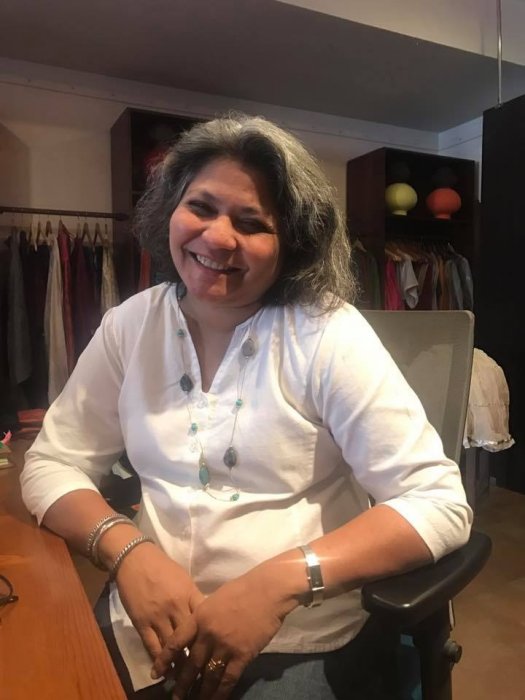 Sandhya Raman For the very first time, the Department of Culture and the Indian Defence department came together to hire a visual designer for the cultural component of the Republic Day Parade. Following the annual show with the Indian defence forces marching, the aircraft "FLY PAST", and the various State sponsored floats came the dance segments that were normally a rag tag bunch of chaotic colours and choreography. This year, my long time collaborator and textile revivalist Sandhya Raman had the distinct honour of being commissioned to design and envision the entire cultural segment. Costumes, colour schemes, the order and flow of each dance piece all came under Sandhya's baton. 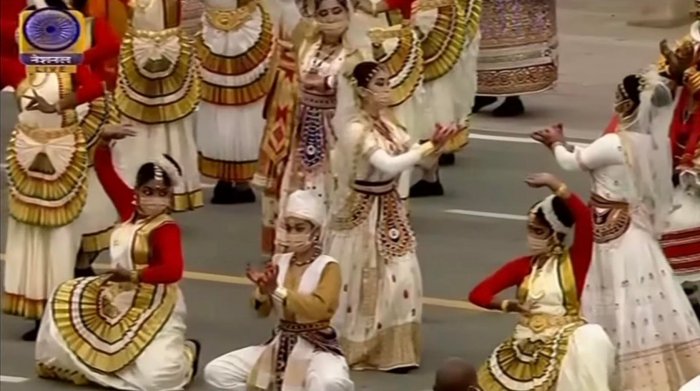 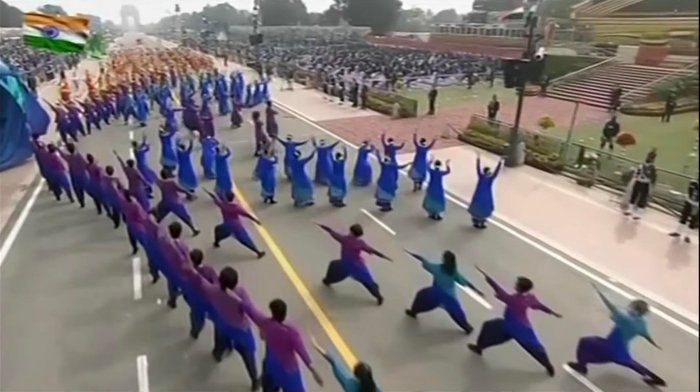 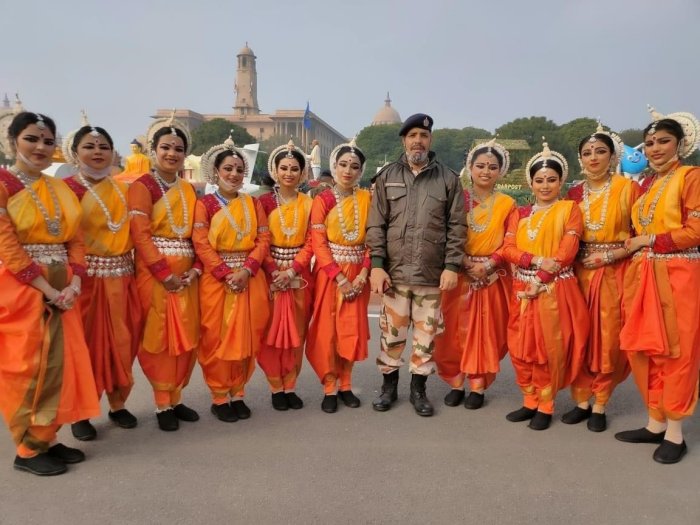 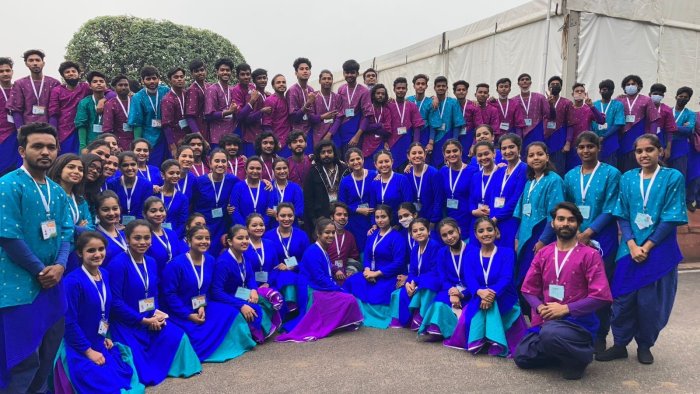 Working day and night on a very tight deadline to create 600 costumes of varying styles and genres, Lycra footwear, accessories and large props was a huge challenge during the Omicron surge in New Delhi. Added to this was the biting cold, questionable accommodations for the visiting artistes, endless protocols and a 4 am wakeup call on January 26th - all of which could not have been easy for everyone involved. Sandhya's meticulous design arrangement concluded with a purple and blue mosaic featuring a giant peacock with flowing fabric as feathers. It must have been beautiful to behold in person, though the camera angles did not show the tall prop in its imagined majesty. In fact, what must have worked on paper did not quite translate on television. The correct camera angles are crucial for such ambitious and large scale events to translate effectively via broadcast. The camera becomes a co-choreographer. So when you have multiple bodies in varying colour palettes being captured by high angled cameras, the entire perspective changes. And not always for the better. Watching from Chennai, this segment looked very close to a giant blob of tutti-fruiti ice cream plopped onto Rajpath! Here I ask. Should classical dancers be walking and dancing on Rajpath? Is that really necessary when many of the State sponsored floats with folk dancers looked so much more natural and graceful? Could there have been another way to envision the finale? #GLOBAL HONOURS  As I conclude, MANCH ARTS UK, a brainchild of Mira Kaushik, unveiled their online event FOOTPRINTS, celebrating artistes whose digital initiatives headlined during the 2 year pandemic. And TEAM NARTHAKI made the list in several categories. TAALAM TALKIES, our unique limited series linking South Indian cinema and Bharatanatyam was mentioned as noteworthy. Our partnership with Ananda Shankar Jayant's NATYARAMBHA through KUTTI KAHANI & TAMRAPATRA was mentioned. NARTHAKI.COM should have been highlighted as a partner and not only my name as an individual. Oh well! 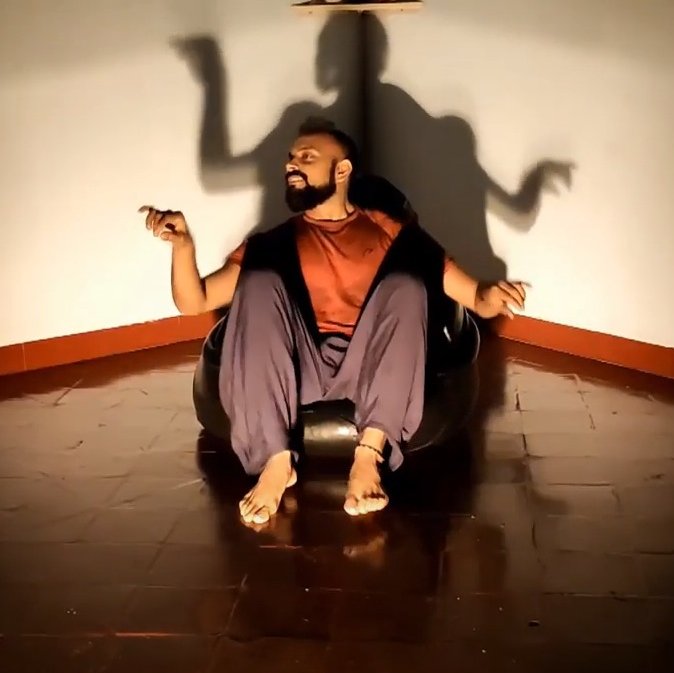 BOXED BOXED was highlighted as expected. My comments on the acute digital divide between urban and rural, thereby alienating and devastating the folk and ritual performers were included. The nominations and praise were wide ranging and we got to know of many noteworthy efforts by artists across geographies. FOOTPRINTS marked MANCH UK as a new brand for curator and cultural producer Mira Kaushik after her successful tenure at AKADEMI. Listening to many of the artistes speak of how they have dealt with and responded to the pandemic made me feel connected to a global community of Indian dance and how determined and inventive so many people have been for the past 2 years. AT ITS CORE, dance has embraced humanity and helped us deal with the catastrophic changes that have been forced upon us due to Covid. Watching the 90 minute celebration, I can confidently safely say that TEAM NARTHAKI was among the very FIRST digital producers of ORIGINAL CONTENT when the lockdown started in India on March 22, 2020. We started on April 1st 2020 and continue as I write this. We refused to manipulate the vulnerability of dancers by asking them to perform for free. We have tried to remain professional at every moment in the communication chain and are delighted with the fact that we have presented more than 150 dancers across our many festivals and talks for 22 months. #LOOKING AHEAD February continues to be busy for many. Newer ventures, ideas in incubation, retreats in isolation, rehearsals for new projects. One can never keep a dancer down. We are among the most resilient and most adaptable of performers. However, issues affecting and impacting dancers and dance making is getting the attention it deserves. When dancer-activist Ananya Chatterjea organised the online conference ARTISTIC CHOICE THROUGH TIMES OF FUNDAMENTAL HATE, it threw up a host of uncomfortable questions and statements. Most importantly how concepts of spirituality can be usurped and co-opted. How religious bigotry and violent nationalism are dangerously woven together to affect art making. We live in times that are goal oriented, yet divided with toxic polarisations, media hot takes and grand ideas about everything. Caste and Class are ramping up their rhetoric. Yet, there is so much generosity and empathy around us. Beauty and Grace just waiting to be noticed. So, let us pick our battles wisely, make work deliberately, ask questions repeatedly and hone our political consciousness gradually. So, until next time then! With this Omicron-Covid wave it is said that "if you don't have friends who have or who have had Covid, then you don't have any friends!" Stay safe and healthy! Try your hardest! Recover fast! Get back on track! Channel your inner Rafa or Malavika! Just do it! - Anita R Ratnam Chennai / New Delhi / Mumbai Twitter: @aratnam Facebook: Anita R Ratnam Instagram: @anitaratnam Blog: THE A LIST / anita-ratnam.blogspot.in Post your comments |